
22 minute read
The Edge of Knowledge
by Kim Johnson
For every virus, ailment, and disease that exists, there are scientists who believe they can unlock its secrets and change lives. But it takes knowledge, good questions, capital, the right people, and a lot of time to go from an idea to a safe, marketable solution. The confidence, conviction, and sometimes craziness of many Wabash alumni are moving the biotechnology landscape forward.
each came to Wabash for a different reason.
Rod Kenley ’72 was introduced to Wabash by the drummer in his high school band.
Paul Radspinner ’85 was headed to a state school, but while at a track meet was prompted by Coach Rob Johnson H’77 to visit campus.
Alex Burgin ’86 knew he wanted to attend a small school and was drawn to the opportunity to get a great education and continue his swimming career.
Dushyanth Surakanti ’98 felt comfortable on the campus in his hometown where several of his friends were also attending.
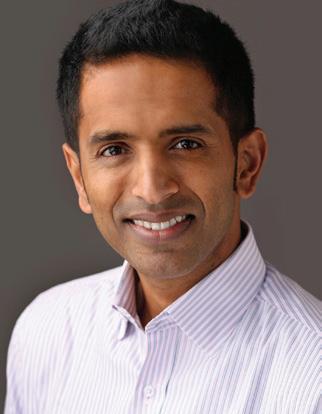
Jason Kwon ’11 was drawn to the other similarly curious minds.
Once on campus, the physical and metaphorical space of Wabash allowed them to grow.
noW, these alumni are W ellestablished scientists and entrepreneurs in biotechnology. They got there by asking smart questions, knowing how to find answers, and bringing together the resources and teams of people who can generate solutions to treat and cure chronic diseases.
“I didn’t know how big the world was. In the confines of campus, I was exposed to so many things,” says Surakanti, founder and CEO of Sparta Biomedical. “Part of the learning was not only academic. Wabash established in me how to be resourceful.
“I remember a meeting I had with Biology Professor David Polley. I asked him about a certain problem. He looked at me and said, ‘How long did you spend looking this up and really trying to solve it before you came into my office?’ I said I had spent a long time but I knew that he knew I was totally full of it.”
Surakanti says the company is driven by asking, “Why not?” instead of saying, “It can’t be done.”
“Everyone has a voice at the table,” he says. “Everyone listens. Everyone is head cook and bottle washer.”
“I wanted to go after really big problems,” he continues. “That led me to explore starting my own thing with technologies that can be profoundly impactful—not necessarily being a physician myself with one patient, but enabling many physicians with a therapeutic.”
Sparta Biomedical has developed a construct that mimicks cartilage. The first application of the product is geared toward people suffering from osteoarthritis in the knee. Over time they will expand to other joints.
“[Founders of biotech startups] fall into this bucket of entrepreneurs who have a very, very high level of conviction—to a point where maybe it’s neurotic,”
Surakanti says. “It’s a combination of having enough experience, but not so much experience that you can only think one way and do it one way.”
Surakanti’s reality check is simple.
“I ask, ‘Would I recommend this for my dad or mom?’” he says. “If I can answer, ‘Absolutely, yes,’ then I know that I’m working on the right thing.”
Kwon credits the introduction to genetics course as influential in his desire to pursue his Ph.D. He is a postdoctoral fellow in molecular genetics at the Dana Farber Cancer Institute at the Broad Institute. His research, recently published in Nature, focuses on more than a quarter of all cancers.
“There are these conceptual latent ideas—information embedded within genetics that derive the consequential nature of all phenotypes in organisms,” he says. “That was mind blowing. I was hooked. My further research with faculty at Wabash gave me the tools to know how to think about science, hypothesis generation, and testing.”
Radspinner is now president and CEO of FluGen Inc. His company is developing a universal flu vaccination to address issues of consistent efficacy, annual virus drift, and shedding. Long-term plans include using similar technologies for COVID-19 prevention.

“This business is brutal when it comes down to it because you’re doing science. There’s no guarantee what the outcome is going to be,” he says. “You can have all kinds of predictors, but in the end, you do a clinical trial, and you are literally sitting there waiting for the results. It could be the end of the company, or it could be every vaccine company is going to want to buy it tomorrow.
“We haven’t experienced the former and, unfortunately, haven’t experienced the latter yet,” Radspinner continues. “It’s the potential to make a significant difference that keeps me going every day.”
For Burgin, it’s the constant challenge in his work that keeps him motivated.
“Drug discovery is incredibly hard. It is one of the things I love about it. It requires an understanding of chemistry, physics, biophysics, and organismal biology,” says the senior director of the Center for the Development of Therapeutics at the Broad Institute in Boston. “When you’re a young scientist especially, there can be a lot of defeat— criticism you take submitting a paper, or getting the hell beat out of you on a grant that’s completely rejected. It takes a lot of strength. But it’s worth it.”
The Broad Institute brings researchers from MIT, Harvard University, and Harvard-affiliated hospitals together in a co-working space where they share ideas and technology, and the academic and industry scientists seek solutions in tandem. It’s a new way of bringing the two groups together under one roof.
“The model where the academic lab is part of the team is very special,” Burgin says. “I spend about half of my time trying to convince companies, venture capitalists, and granting institutions to support this new model of discovery; about a quarter of my time thinking about the science, looking at data, understanding where we’re going, what we’re doing; and the last quarter getting everybody on the same page—rowing in the right direction and excited about being here, and then recruiting and retaining the best scientists.” biotechnology is an aggressive space that encompasses a vast array of research and development within a market predicted by BioSpace to be $3.44 trillion by 2030. Even so, the necessary capital, even if the science is solid, can be hard to come by.
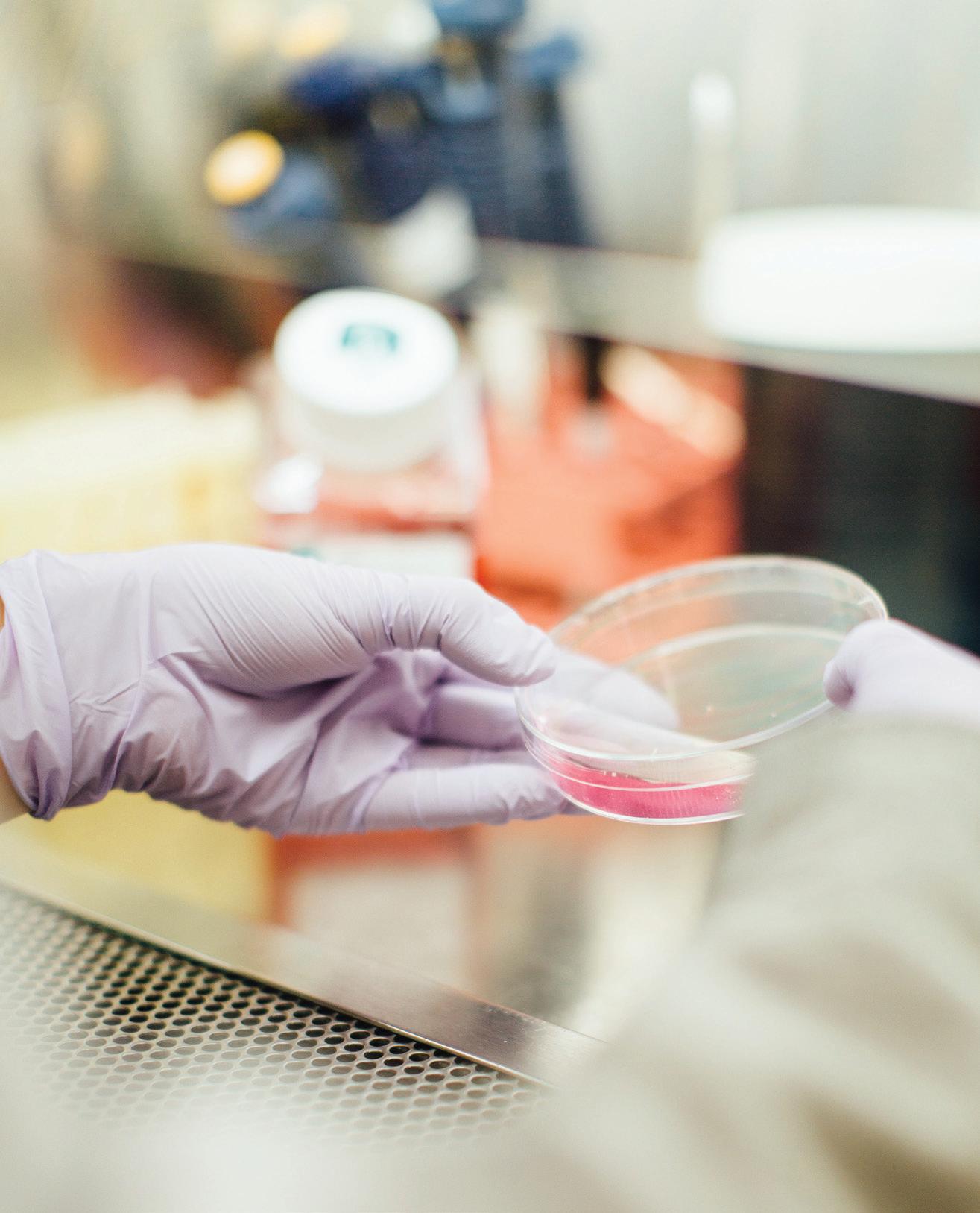
“I hate to lose. I’m a very competitive individual,” says Kenley, who spent a few years in marketing before moving to technology development. “You’ve got to know how to develop a business plan that can persuade investors to part with their money, and you’ve got to be able to present it well.”
Kenley now owns more than 100 patents centered on at-home kidney dialysis and the treatment of kidney disease. As the chief innovation officer at Byonyks Inc., he is part of a team building a device to cut down on waste and cost, and increase the ease and efficiency of dialysis.
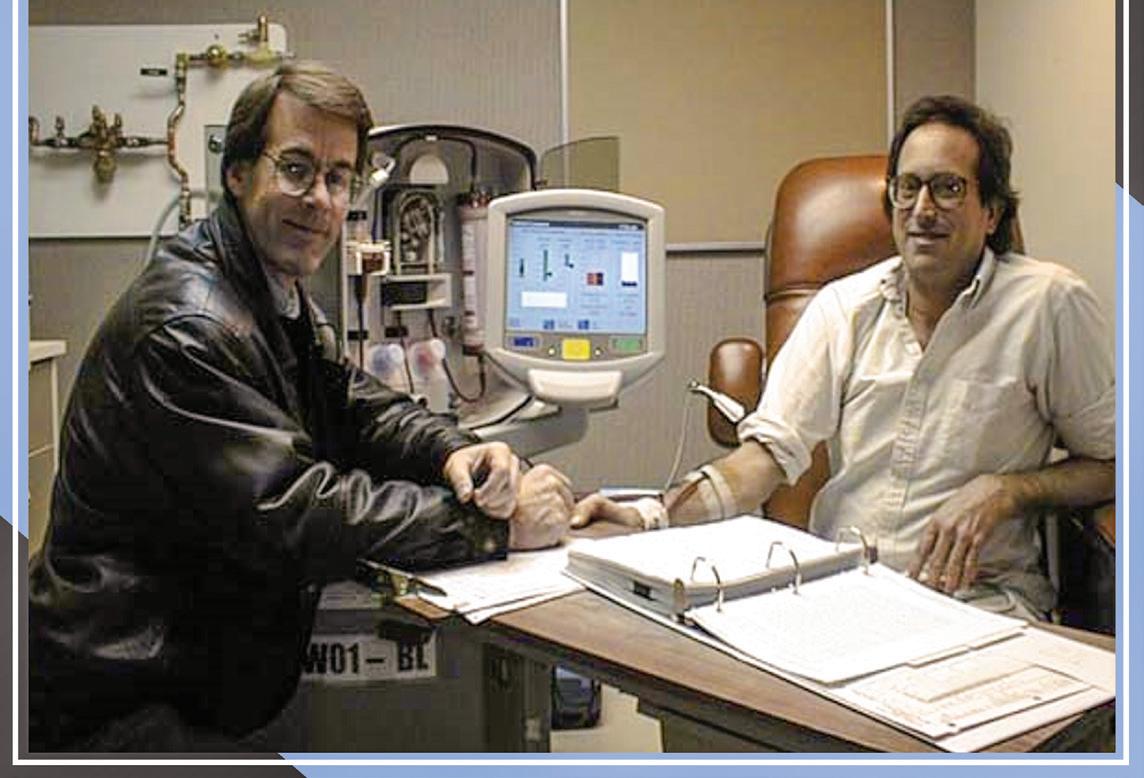
In the beginning, Kenley believed in his idea and refused to give up.
“I finally got in touch with the right people and that put us on the path to getting the funding,” he says. “I was able to scrape through until that first check came in. That was a big day—when I took a million-dollar check to the bank, handed it to the cashier, and said, ‘Deposit this in my account, please.’”
Radspinner understands the volatility of research and development.
“Luckily, I was a little bit naive, because if I knew what it takes to develop a vaccine, I might not have chosen that path,” Radspinner says with a laugh. “We raised a couple million dollars just to get going in about 30 days. It shouldn’t have happened that quickly. It made me think it was really easy to raise money. The death of most small businesses, or most startups, is a lack of capital. That’s the reason most don’t make it. They overestimate sales or underestimate how difficult it is to raise capital. the quick development of a COVID-19 vaccination within a year of the first documented case in humans had Radspinner getting quizzed.
“The highs are higher, the lows are lower, and they’re closer together,” he says. “One day you’ll have a setback on the clinical trial or the science. And then the next day, you’ll have a meeting with a company and then they’ll be interested in partnering, or we just got two grants worth $8 million. Those are good days.
“I’ve had people say, ‘Why is it taking you so long?’” he recalls. “I didn’t have a billion dollars thrown at me. Remember, at that time, every vaccine company started working on COVID.”
But he says scientists began the work on mRNA, the driver of the COVID-19 vaccination, more than 20 years ago.
“We were fortunate. If COVID had hit five years earlier, the vaccine development never would have happened that fast,” Radspinner says. “We’d probably still be trying to get a vaccine right now. In the end, it turned into a positive. We all know the history and who ended up making it across the finish line, Pfizer and Moderna. Those companies have done well. Because of that, there’s more money out there being used to work with companies like us.
“When we first started moving forward on a new universal flu vaccination, the first two candidates failed pretty quickly,” he says. “While we were pivoting, another candidate came through. It’s now in phase two clinical trials.”
The process starts with preclinical work which includes checking safety, efficacy, and toxicology. Then an Investigational New Drug (IND) application gets filed with the FDA.
“If they allow you to move forward, you run a clinical trial,” Radspinner explains. “The first thing you do is start with a low dose and work up, starting with healthy populations first, then the older adults, and eventually children all the way down to six months.

“Phase two can be a couple of things with vaccines. Our phase two was a challenge study. You get either a placebo or our vaccine,” he says. “Phase three is creating a safety database that’s large enough in each target population. That’s at least 3,000 subjects on the vaccine, and another 3,000 on a comparator or a placebo. Then manufacturing—different lots are tested to show consistency from one batch to the next.
“The average vaccine takes 15 to 20 years to get approved.”
Getting a therapeutic device to market also takes a lot of time and many layers of testing, approval, and evaluation.
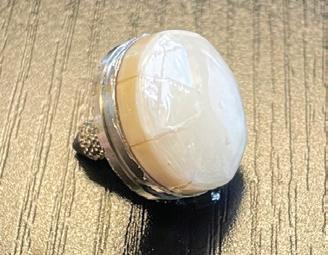
“In 2018 we started the exercise of ‘Can we bring this to market?’” says Surakanti. “It has gotten to the point where we are now hoping to study in people. We are on track to file an Investigational Device Exemption (IDE) application with the FDA to start the clinical study by the end of the year to collect safety and effectiveness data. And at the end of 2026, we will file a Premarket Approval (PMA) with the FDA. If the FDA says, ‘We like what we see; you’re approved,’ we would launch in 2027.
“We get messages from people that say, ‘Please hurry. I’m in my 30s and I can’t make it to the bathroom without crutches.’ It really establishes the why— why we have been tirelessly working over the past few years to get this to market as quickly as possible.” every incremental step, idea, failure, and success brings with it the possibility of positively impacting lives.
“My pledge brother’s wife contracted kidney failure. She was using my home dialysis machine,” Kenley says. “I visited them and I took with me some pictures to show her how we developed it with different prototypes. She gave me feedback about what she liked and disliked. It’s really gratifying to see somebody benefiting from something I’d done—especially when it’s that close to home.”
Surakanti appreciates what the win means for the patients but also for his team.
“The most exciting aspect is the immediate restoration of mobility, significant pain reduction, and the ability for individuals to engage in their daily activities again,” says Surakanti. “As we progress toward our goal, we will be able to say we worked on something transformative and overcame numerous challenges, and we can look back and say we grew from it—technically and from each other and all of our different partners who were involved throughout.”
Success is obvious in a product that makes it to market, but Burgin recognizes the importance of celebrating every step of learning.
“Many projects fail. With biology there are a bunch of unknowns,” Burgin says. “It was a great idea, but it’s not going to work. That is actually a victory. We can show this is not a path to take. Hopefully, it’ll show us a new path.
“But we need to celebrate that as a victory as well. That’s a fundamental problem in science. There are no incentives for negative results. I take it seriously to make sure the team knows, even when the project is ending, that’s a victory. You showed there is no path forward. I wish we would have made a drug, but you know what? We’re going to help the world know not to waste your time over here.”

For Kwon, there is joy in knowing he might be onto something.
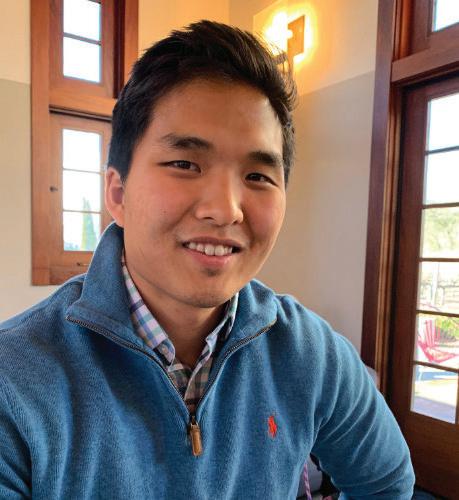
“Most days,” Kwon says, “I wake up pinching myself wondering how I could have been so lucky to have a job that I get to do what I love every day just answering questions about the unknown that no one might know but me. The ability to dream up a question and then go answer it is pure bliss for me.
“Whatever we discover has some core relevance to potentially benefit humanity,” he continues, “whether it be inspiring or informing the development of new therapeutics or simply adding to the large canon of human knowledge.”
Ultimately, few people get to this point with any project. Perseverance pays off.
“How many scientists or research assistants get to say, ‘I was involved in that vaccine that’s in the market right now’?” says Radspinner. “Believe in yourself and just keep going.” .
1966
Dennis Whigham has developed a 3D foldable paper orchid model, known as orchid-gami, that can be purchased in bookstores or online. Proceeds go toward orchid conservation.
1980
The American Hospital Association has elected Joseph Impicciche to fill a vacancy on its board of trustees. His term on the board will end in December 2024.
1982
John M. Donovan is now offering a thrice-weekly newsletter on Substack. “From the Desk of John M. Donovan” (johnmdonovan.substack.com) features memoir, political commentary, and a variety of folderol.
1985
1969
Ivan Green and his wife, Noreen, participated in a polar plunge as part of their cruise to Antarctica on the Seabourn Venture in November 2022. He says, “It was an exhilarating, unique experience that was offered weather and conditions permitting that 50 passengers and 40 crew availed of. Temperature was about -1°C. We had liquid fortification both before and after, and subsequently thawed and warmed in the ship’s sauna, from which we were able to watch others enjoy the experience. It was awe-inspiring and a hoot. The scenery was magnificent.”
1976
Junior Achievement of Southwestern Indiana and Dentons Bingham Greenebaum named U.S. Senator Mike Braun as one of its 2023 JA Dubois County Business Hall of Fame Laureates. Rob Matthews resigned as president of 603 WW Inc. and passed the position on to Marcus Manges ’10. In addition, Ralph Dixon ’79 resigned as chairman of the board and Roger Wilson ’76 took over those responsibilities.
1979
James Jantzen is writing an autobiography while undergoing treatment for myelodysplastic syndrome, a group of cancers of the blood marrow.
Contribute
Ryan Lane and Emeritus Art Professor Greg Huebner H’77 had a joint show in May at the Magdalena Gallery of Art in Carmel, IN.

1987
Mike Shaw has been selected as the new Rushville Parks director.
1989
Dan Couch has seven songs on singer-songwriter Kip Moore’s new album, “Damn Love.”
1990
Phil Goss visited Professor Agata Szczeszak-Brewer’s ENG 109 Genocide and Refugees class, where he discussed his recent work supporting Ukrainian refugees.
1991
Joab Schultheis was elected to the Sierra Club Hoosier Chapter’s executive committee. He also chairs its energy committee.
1993
David Barrett continues to serve on the executive leadership team at Faegre Drinker following the transition to a new chair on April 1.
1994
Andy Dorrel was appointed director of Culver Summer Schools and Camps.
We love hearing from you. Submit your news to communications@wabash.edu.
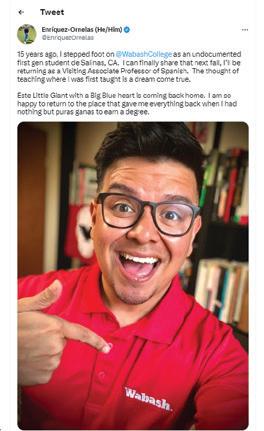
1997
Indiana Gov. Eric Holcomb appointed Stephen R. Creason to the Marion County Superior Court as a judge.
1999
Roger Dombkowski Jr. is the recipient of the 2022–23 Interscholastic Athletic Official Award for excellence in swimming and diving.
2005
Ben Hewitt, head swimming coach at Nova Southeastern University in Florida, led the women’s swim team to the 2023 NCAA Division II national championship.
2007
Nick Pompeo has joined Barclay Damon’s Commercial Litigation, Torts & Products Liability Defense and Labor & Employment Practice areas as an associate. Joey Smith has become manager of the Whitewater Canal State Historic Site in Metamora, IN, beginning a professional career with the Indiana State Museum and Historic Sites.
2008
Julio Enríquez-Ornelas will be returning to Wabash as a visiting associate professor of Spanish.
2013
Vann Hunt was named Manchester University’s new head football coach. He most recently served as acting head coach at Allegheny College.
2021
The Heartland Collegiate Athletic Conference (HCAC) announced the addition of Isaiah Campbell to the conference office staff as the championships, events, and operations intern.
2022
Jack Davidson joined the Ballarat Miners, an NBL1 basketball team based in Ballarat, Australia and averaged 24.4 points per game last season.
2023
Philip Graves began his studies at Wabash in the fall of 2004 and crossed the finish line in May. He says, “Wabash College was always important to me, and although my journey was far from ordinary, I’m grateful for the opportunity to finish strong and set a good example for my family and others. I joked with my wife that all my fellow graduates were discussing their summer and fall plans, and I just told them, ‘I’m going back to work on Monday.’” Professor of Spanish and Asian Studies Dan Rogers says, “It was incredibly special to see him realize his dream and walk at graduation after finishing up a missing credit.”
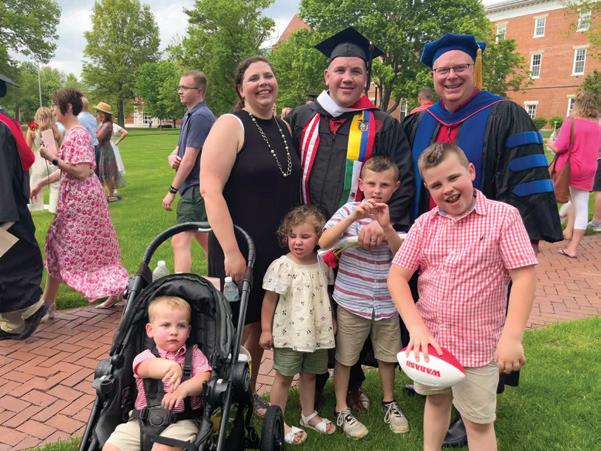
1944
James “Jim” Loy died in July 2019. He was born November 29, 1925, in El Reno, OK, to Robert L. “Bert” Loy and Mildred (Lowe) Loy. He had one brother, the late Dr. Robert Loy.
Loy graduated from Classen High School in 1943. He enlisted in the Navy, served on the USS Wayne, and participated in the landing in Nagasaki. After the war, he married Duane Colcord in Oklahoma City. They had three children, Jim Jr., Bob, and Dana.
Loy graduated from Oklahoma City University and earned his master’s degree at Northwestern University of Chicago. In 1955, he became administrator of the Chickasha Hospital and Clinic. In 1959, Grady Memorial Hospital opened and Loy remained at what became Southern Plains Medical Center until retiring in 1990. He also served as president of the Medical Group Management Association.
Loy was deeply involved in Chickasha community affairs, serving on the city council and board of education. He was president of the Jaycees, the Chamber of Commerce, and the United Way, and served two terms on the Oklahoma State Ethics Commission. In 2016, Loy was enshrined in the Chickasha Civic Hall of Fame.
During their decades together, Loy and his wife loved tennis, golf, skiing, collecting Native American art, and traveling, especially to New Mexico. Loy was preceded in death by both parents; his brother; his son, Jim Jr.; and his wife, Duane. Survivors include his children, Bob and Dana; three granddaughters; and two greatgrandchildren.
1950
James Mason Givens Jr. was born in Gary, IN, and died in Redlands, CA. He was 93 years old.
1953
Donald “Don” George Leppert, 91, died April 13 in Delaware, OH. He was born on October 19, 1931, in Indianapolis to William and Mae (Lawson) Leppert.
After high school, Leppert enrolled at Wabash College, where he played football. When the Korean War began, he enlisted in the United States Air Force as an MP. He served his obligation and was honorably discharged in 1958, at which point he was drafted from his Air Force base’s baseball team into the minor leagues of baseball.
Leppert began his career playing in the Texas League. He joined the Pittsburgh Pirates for the 1961 season. Throughout his career, he was involved with many major league teams, including the Pittsburgh Pirates, Washington Senators, Toronto Blue Jays, Houston Astros, and Minnesota Twins. Leppert spent many winters playing in Central and South America in places such as the Dominican Republic, Puerto Rico, and Venezuela.
Throughout his more than 40 years in baseball, Leppert would accomplish more than most people could dream of, including three World Series rings, a home run in his first major league at-bat, three home runs in one game, a 1963 All Star game selection, a Caribbean World Series title, and an induction into the Indiana Baseball Hall of Fame.
Leppert retired to Naples, FL, with his wife, Daphine, and later moved to be near family in Delaware, OH.
Leppert is survived by his wife of 65 years, Daphine (Hope); their five children, Steve, Kim, Mike, Joe, and Tim; nine grandchildren; and seven great-grandchildren. He was preceded in death by his parents, William and Mae, and his brother, David.
1956
Paul E. Kimball, 87, retired Navy commander and defense consultant, died February 15 in West Columbia, SC. He was born in Chicago and graduated from Lake View High School. At Wabash he was a member of Sphinx Club, Glee Club, and Sigma Chi.
After graduation, Kimball attended Navy OCS and served aboard the destroyer USS Heerman. He was selected for the submarine service and subsequently served aboard USS Diodon, USS Baya, USS Medregal, and the FBM submarine USS Daniel Webster. Shore duties included instructing at the Submarine School and evaluating crew performance in the operation of the Polaris, Poseidon, and Trident missile systems at Cape Canaveral. He represented the U.S. Navy in London, England, on the staff of the commander-in-chief, U.S. Naval Forces Europe, and later as liaison officer to the Royal Navy Polaris Missile Program.
Following his retirement from the Navy in 1978, Kimball was a consultant to various defense contractors in Washington in the areas of undersea warfare and undersea vehicles. From 1987 until 1992 he was a manager with General Dynamics Undersea Warfare Center in Arlington. After his second retirement, he moved to Reedville, VA, where he rekindled his lifelong love of music by joining the Chesapeake Chorale and the local barbershop music group. He performed in a number of musical plays for local community theater. He also became a website administrator for local arts and musical organizations and a number of small businesses.
Kimball is survived by his beloved wife, Jane; daughters, Paige K. Long, Lynne Sepple, Victoria Jones, Caroline Chesbro, and Rosie Linder Jones; 11 grandchildren; and three great-grandchildren.
John D. Nash, age 89, died on March 26 in Englewood, OH. He was born in 1934 in Carlisle, IN, and is the only child of Edgar and Mary Nash, who predeceased him.
He graduated from Wabash College in 1956, where he played varsity basketball and baseball and was a member of Phi Delta Theta. Nash married his wife, Shirley (Cunningham), on August 26, 1956.
He was drafted into the Army in 1957 and served as a medic in the 4th Infantry at Fort Lewis in Tacoma, WA, until 1959. After being honorably discharged, Nash joined Wyeth Ayerst as a pharmaceutical representative. He remained with the company for 35 years, serving Dayton, OH, and the surrounding areas.
He was an active member of First Baptist Church of Dayton for 61 years, volunteering his time and talents in many capacities. He was a loving and generous husband, father, and grandfather and an exceptional role model.
In addition to his wife, Shirley, Nash is survived by his children, Susan Deffet and John C. Nash; grandchildren; and brother-in-law, Jim Cunningham.
Dr. Galen Weaver died January 12, 2022, in Denver at the age of 91. He was a psychiatrist who practiced in Denver from 1969 until 2014.
Weaver was the second of three children of Grant and Lutie (Sargent) Weaver, born in 1931 in Johnstown, PA. He grew up in Pennsylvania and Ohio, and graduated from Wabash College in 1956. During college he served with the Brethren Service Commission for three years in Germany and Austria, working with refugees and performing other duties. While in Germany he met his future wife, Carolyn Ikenberry of Bridgewater, VA.
After two years of postgraduate studies at Yale, Weaver received a master of arts in teaching. He and Carolyn married in 1958 and traveled to Syria, where they taught at an American school in Aleppo for two years. Upon their return to the U.S., Weaver enrolled in medical school at Case Western Reserve in Cleveland, where his sons Michael and Christopher were born.
In 1965 the family moved to Denver, and Weaver completed his residency in psychiatry before starting his professional life in 1969. In the meantime, their third son, Thomas, was born, and Galen and Carolyn raised their family in East Denver, with all three boys attending Graland Country Day School and Manual High School.
Weaver served as the director of the Denver Mental Health Center for roughly 20 years until its closure, at which point he established a private practice that he would maintain until his retirement at age 82. He also worked for a number of years at the Gates Clinic.
Weaver was a kind and gentle man, and a generous and loving father and grandfather. He was an avid sports fan, golfer, tennis player, and environmentalist, and an inveterate optimist who always saw the best in people. He volunteered with Second Chances Denver and was a longtime member of First Plymouth Congregational Church.
Weaver was predeceased by his siblings, Marlin and Mayno; and his son Christopher. He is survived by his wife of 65 years, Carolyn; his sons Michael and Thomas; his daughter-in-law, Rhett Hudson; and four grandsons.
1957
George Edward
Heiland died March 23. He was born May 27, 1935, to John and Mary Heiland in Chicago during the Great Depression. After his mother’s death during childbirth, George was adopted by his Aunt Cecelia and Uncle Ed and raised in Barrington, IL. It was at the Barrington High School Square Dance Club that he met the love of his life, Diane Nancy Larlee.
At Wabash, he was a Sigma Chi, majored in economics, and minored in history. He later found success in sales. In the 1960s, when sales representatives managed their territories from a full-size car, Heiland purchased the novel VW Bug and made money from the mileage allowance. After marrying in 1958, Heiland and his wife, along with their first child, Greg, moved cross-country to Arizona in the summer of 1965.
Heiland was passionate about business opportunities and was a serial entrepreneur. After initial success in the commercial laundering of diapers, he expanded to drapery cleaning and manufacturing. Always interested in new business opportunities, Heiland built spec homes and bought raw land in Pinnacle Peak and tracts of land in Phoenix’s expansion paths.
As avid travelers, Heiland and his wife took extended treks to Europe, Asia, and Australia, and cruises wherever the vessels would dock. In between running his business, he loved escaping to his beloved Santa Maria Ranch. He towed the family in an iconic 1971 Airstream as far as Puerto Vallarta for what became annual Easter adventures throughout Mexico. For 20 years, Heiland, along with his best friends, owned a sailboat in San Diego. He savored the outdoors as an avid fisherman, hunter, scuba diver, and boater. He was most comfortable around the campfire.
Heiland’s Catholic faith defined his life, of which Bible studies and Christian organizations were a big part. The family was generous in spirit, and their home was often filled with guests. Family dinners were the highlight of the day.
Heiland and his wife celebrated 60 memorable years of marriage before Diane died in 2018. Together they had four children, Greg, Kurt, Chris, and Heidi; 17 grandchildren; two greatgrandsons; and two nieces.
1958
Norman Richard “Dick” Stelter died at age 82. He was beloved husband and best friend to Alexandra for 57 years. He was the loving father of Rachel Stelter-Bicknell, Matthew Stelter, and Christopher Stelter; proud grandpa; and brother.
1961
James Russell Wells, age 82, of Henderson, NV, died January 21. He was born April 11, 1940.
1966
Charles Keith Ayers, 78, of Paradise Valley, AZ, died January 21. He was born to Joseph Ayers and Margaret Dow on December 28, 1944, in Rockport, IN. He graduated from Bloom Township High School in 1962 in Chicago Heights, IL. He went on to study at Wabash College and Yale University.
During the years of 1967 to 1968, Ayers and his wife lived in Germany, where he had received an offer from the German government to study the German language. After this period of study, he became a German professor for a time in Grinnell, IA, before moving on to the University of Iowa, where he completed his law degree in 1974, graduating first in his class. He worked as an attorney, beginning as a partner with the firm Snell and Wilmer and eventually opening his own firm, which went on to become Ayers and Brown PLLC.
After 49 years of legal service, he retired in 2021. He enjoyed several hobbies and was an accomplished guitarist, hunter, and fisherman. He loved golf, played often, and even had a hole in one. He loved to travel, enjoyed a good book, and could breeze through complex crossword puzzles. In his younger years, he was known to be a bit of a pool shark.
Ayers met Diane Lampley in 1960. They were married June 11, 1966, in Chicago Heights, IL. Together they raised two children, James Cameron and David Jonathan.
Ayers is survived by his wife; sons; daughter-in-law; sisterin-law; grandsons; brother, Jim; several nieces; and a nephew. He was preceded in death by his parents and two older brothers, Bob and Bill.
Dr. Jon W. Holdread, 79, died March 11 in Columbus, IN. He was born March 3, 1944, in Goshen, IN, and was the son of Gordon W. and Arlene Yoder Holdread. On November 3, 1968, he married Judy D. Emerson.
Holdread was a 1966 graduate of Wabash College and a 1970 graduate of Indiana University School of Medicine. He went on to serve his internship and residency at Indiana University Medical Center Department of Psychiatry. Upon completing his residency, he went on to be a staff psychiatrist at Quinco Consulting Center from 1973 to 1976. He owned his own private practice, Psychiatric Associates, for nearly 35 years, and retired from Centerstone. He enjoyed working with and teaching fellow students in the medical field. He served as an assistant professor of clinical psychiatry at Indiana University School of Medicine, Department of Psychiatry; examiner for clinical exams for psychiatric residents; and instructor for Introduction to Medicine for freshman medical students. Holdread held numerous organizations dear to his heart, including the Bartholomew/Brown County Medical Society, Indiana Psychiatric Society, Indiana State Medical Association, American Psychiatric Association, and Central Neuropsychiatric Society. Throughout his time practicing in Columbus, he served on numerous boards at Columbus Regional Hospital.
Holdread was active in the community and enjoyed being involved in various organizations, such as medical advisory committee to Bartholomew County School Board, advisory board at Turning Point Women’s Shelter, Columbus Rotary Club, Foundation for Youth Board, and Wabash College alumni representative. He served as a certified timer for the Indiana Swimming Certification, president of the Board for St. Paul’s Episcopal Church, and deacon at First Presbyterian Church. He was a member of First Presbyterian Church and also enjoyed bicycling and racing at the Indianapolis Velodrome. Survivors include his wife of 54 years, Judy Holdread; children, Kevin Holdread, Jennifer King, and Brooke Burchyett; grandchildren; a sister; and a brother-in-law. He was preceded in death by his parents.
National Association Of Wabash Men
Board Of Directors
Jim Hawksworth ’95
President
Tony Unfried ’03
Vice President
Ken Farris ’12
Recorder
Rudy Altergott ’13 chris carpenter ’96
Class Agent Representatives
Kip Chase ’03
Past President
Board Members
Term Expires May 2024
Rudy Altergott ’13
Jake German ’11
Garrard McClendon ’88
Neil Patel ’94
Brian Shelbourne ’12
Todd Vogel ’04
Term Expires May 2025
Taz Ahmed ’07
Mike Berry ’92
Wayne Hentrup ’84
Byron Lamm ’79
Rick Strasser ’02
Milton Turner ’05
TERM EXPIRES MAY 2026
Kyle Bender ’12
Jared Lange ’08
Kevin Meyer ’06
Harsh Singh ’01
Dave Zimmerman ’93
Faculty Representative
Bobby Horton
Student Representative
Luis Rivera ’25
NEW TO AN AREA?
Find the Wabash alumni association nearest to you at: wabash.edu/alumni/ra/list
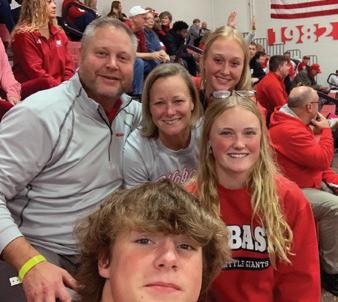
WANT TO REFER A STUDENT? wabash.edu/alumni/student/refer wabash.edu/careers/alumni/services
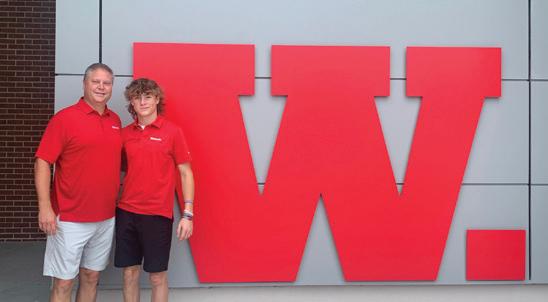
CHANGING CAREERS OR ON A JOB SEARCH?
WANT TO CONNECT WITH WABASH ALUMNI AFFAIRS? wabash.edu/alumni/










